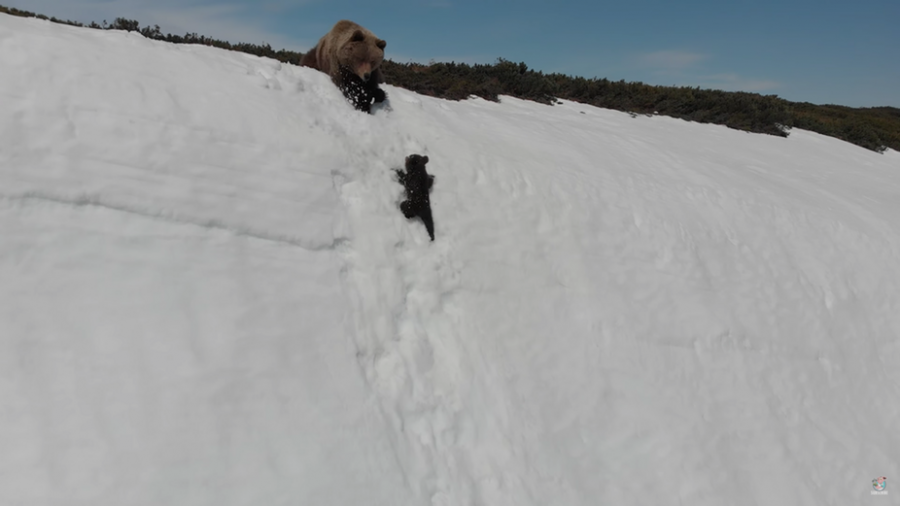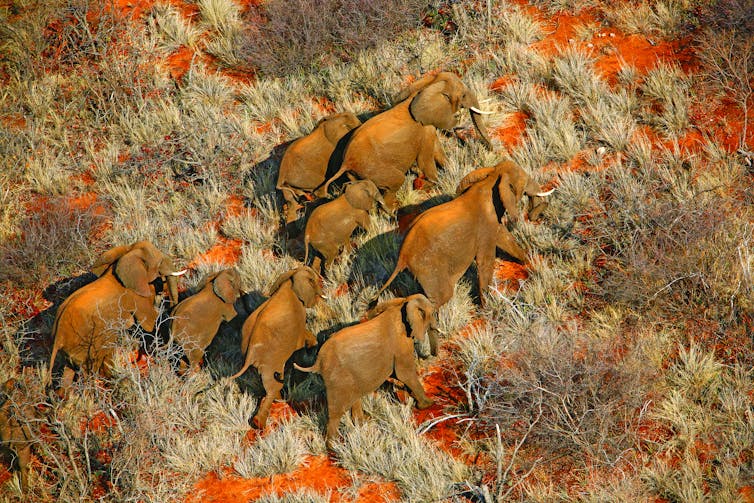
Viral Bear Video Shows How Drones Threaten Wildlife – And What To Do About It
A recent online video took what seemed like an inspirational moment viral. The video, shot by Dmitry Kedrov using a drone, shows a baby bear climbing up and falling down the side of a mountain near Russia’s Sea of Okhotsk. After repeated efforts, the cub finally reaches the top, joining his mother and winning the […]

A recent online video took what seemed like an inspirational moment viral. The video, shot by Dmitry Kedrov using a drone, shows a baby bear climbing up and falling down the side of a mountain near Russia’s Sea of Okhotsk. After repeated efforts, the cub finally reaches the top, joining his mother and winning the hearts of viewers around the world. (See video at bottom of page.)

But after the initial enthusiasm for the video came some controversy when scientists pointed out that the incident may have been caused by the drone risking the cub’s life by interrupting its efforts to climb to safety. This prompted some online commenters to call for drones to be banned on grounds of environmental impact, while others defended the responsible use of this technology.
My colleagues and I have been researching the impact of drones on wildlife and found that they pose very similar kinds of threats as other disturbances such as people, cars and conventional aircraft. This suggests that rules and guidelines that took animals into account would make a big difference to how much harm remotely and autonomously controlled aircraft could cause to wildlife through their noise and visual presence.
When animals come into contact with drones, they may experience physiological changes such as an increased heart rate, behavioural responses such as running or flying away, or even suffer stress that could disrupt their reproductive process. If they decide to avoid specific areas as a result of frequent disturbing drone encounters, this could fragment and ultimately damage the whole population.
Unfortunately, there is no reliable indicator that can give us an idea of the extent to which these flights are affecting wildlife. But this does not mean that there is no need to worry, because drone use is expected to increase in coming years.
Exactly how serious the threat from drones is depends on how often and how intensely they disturb the animals. If they are frequently disturbed, the animals will likely abandon the area, but they could also eventually become used to the drones. At worst, if drones fly too close to animals, collisions or attacks can cause wounds or death. Also, not all animal species nor individuals react to drones in the same way, and they may be more vulnerable in certain moments, such as breeding season, or in areas without protection or escape routes.
With all this in mind, drone operators should try to minimise the impact they have on wildlife. To start with, they should consider why they want to fly into or near an animal’s habitat and whether they really need to. When scientific projects are planned, they have to be approved by ethical committees and the potential disturbance has to be justified by the interest of the project.

Risking the life of an animal to create a popular online video is unacceptable. But if you are trying to gather data for a conservation project, a small disturbance to wildlife in order to protect it can be justified, and drones may be the least impactful way to do it. After all, any method of gathering animal data involves a certain degree of disturbance.
Cars and manned aircraft are substantially more noticeable and noisier than drones. Monitoring a bird breeding colony on foot causes considerable chaos. Trapping animals involves considerable risks and equipping them with sensors or GPS can harm them.
If using a drone is the best option, it’s best to minimise the risk of disturbance and accidents by using an experienced pilot and a reliable, small and low-noise drone that doesn’t resemble the shape of a predator. Missions should be as short and at the highest altitude possible, using a regular, back-and-forth flight pattern over the animals and not complicated manoeuvres directed towards them.
If it’s convenient, drones should take off and land at least 100 metres away from the animals and avoid disturbing them during breeding periods and at times of day when they may be most vulnerable. It’s also important to monitor the target animals during flight so you can check if they are being disturbed and abort the mission if necessary. You should also avoid protected areas, flying over sensitive species or abundant wildlife.
Flying drones around animals requires basic knowledge and respect for wildlife. But the reality is that drone users without a wildlife background may not be aware that they are flying into a raptor breeding territory or that the drone noise may disturb animals on the ground. We encourage drone manufacturers to help by including this kind of basic advice with the instructions that come with the drones.
But what about people who choose not to follow these kind of guidelines? I think we need a legal framework so that appropriate actions can be taken when wildlife is negatively affected by irresponsible drone operators. Then perhaps people won’t be so keen to risk disturbing animals for the sake of YouTube views.
Margarita Mulero Pazmany, Lecturer in UAV Applications, Liverpool John Moores University
This article is republished from The Conversation under a Creative Commons license. Read the original article.